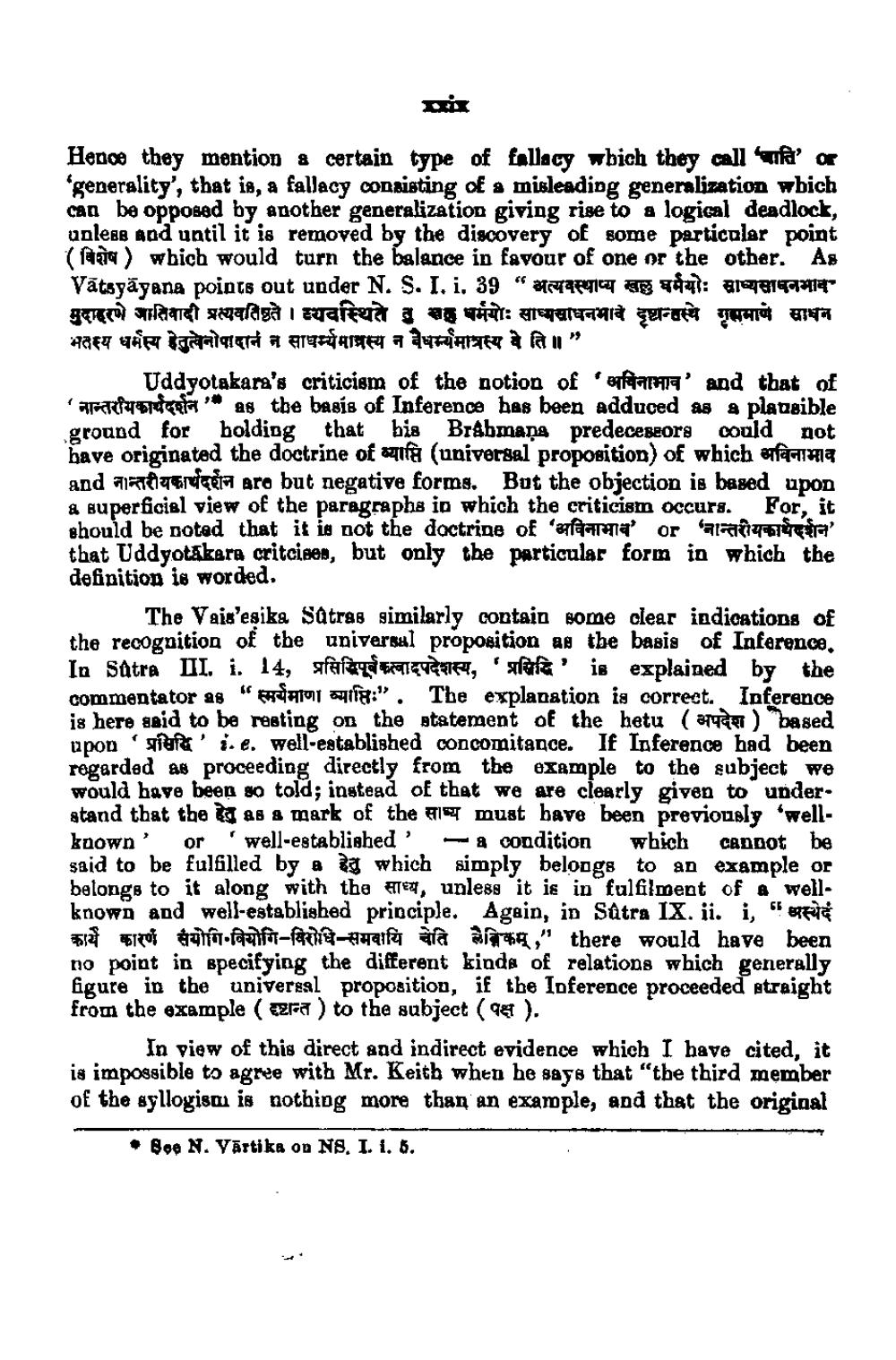________________
xxix
Hence they mention a certain type of fallacy which they call 'f' or 'generality', that is, a fallacy consisting of a misleading generalization which can be opposed by another generalization giving rise to a logical deadlock, unless and until it is removed by the discovery of some particular point (a) which would turn the balance in favour of one or the other. As Vatsyayana points out under N. S. I. 1. 39 “ अत्यवस्थाप्य खलु घर्मयोः साध्यसाधनभाव मुदाहरणे जातिवादी प्रत्यवतिष्ठते । व्यवस्थिते तु व धर्मयोः साध्यसाधनभावे दृष्टान्तस्थे गृत्समाणे साधन तस्य धर्मस्य हेतुत्वेनोपादानं न साधर्म्यमात्रस्य न वैधर्म्यमात्रस्य वे ति ॥
39
not
Uddyotakara's criticism of the notion of 'fam' and that of 'नान्तरीयकार्यदर्शन 00 as the basis of Inference has been adduced as a plausible ground for holding that bis Brahmana predecessors could have originated the doctrine of fà (universal proposition) of which erfarna and in are but negative forms. But the objection is based upon a superficial view of the paragraphs in which the criticism occurs. For, it should be noted that it is not the doctrine of 'tr' or 'नान्तरीयकार्थदर्शन' that Uddyotakara critcises, but only the particular form in which the definition is worded.
•
The Vais'esika Satras similarly contain some clear indications of the recognition of the universal proposition as the basis of Inference. In Satra III i 14, प्रसिद्धिपूर्व करना दपदेशस्य, ' प्रसिद्धि ' is explained by the commentator as " स्मर्यमाणा व्याप्तिः " The explanation is correct. Inference is here said to be resting on the statement of the hetu (arr) based upon 'if' i. e. well-established concomitance. If Inference had been regarded as proceeding directly from the example to the subject we would have been so told; instead of that we are clearly given to understand that the as a mark of the must have been previously 'wellknown' or 'well-established ' -a condition which cannot be said to be fulfilled by a 3 which simply belongs to an example or belongs to it along with the , unless it is in fulfilment of a wellknown and well-established principle. Again, in Sûtra IX. ii. i, अस्येदं कार्ये कारणं संयोगि वियोगि- विरोधि - समवायि चेति लैनिकम्," there would have been no point in specifying the different kinds of relations which generally figure in the universal proposition, if the Inference proceeded straight from the example (ra) to the subject ( ).
GE
In view of this direct and indirect evidence which I have cited, it is impossible to agree with Mr. Keith when he says that "the third member of the syllogism is nothing more than an example, and that the original
• Bee N. Vārtika on NS. I. i. 5.




